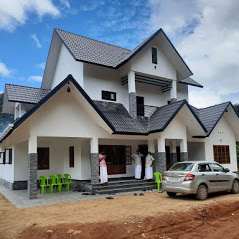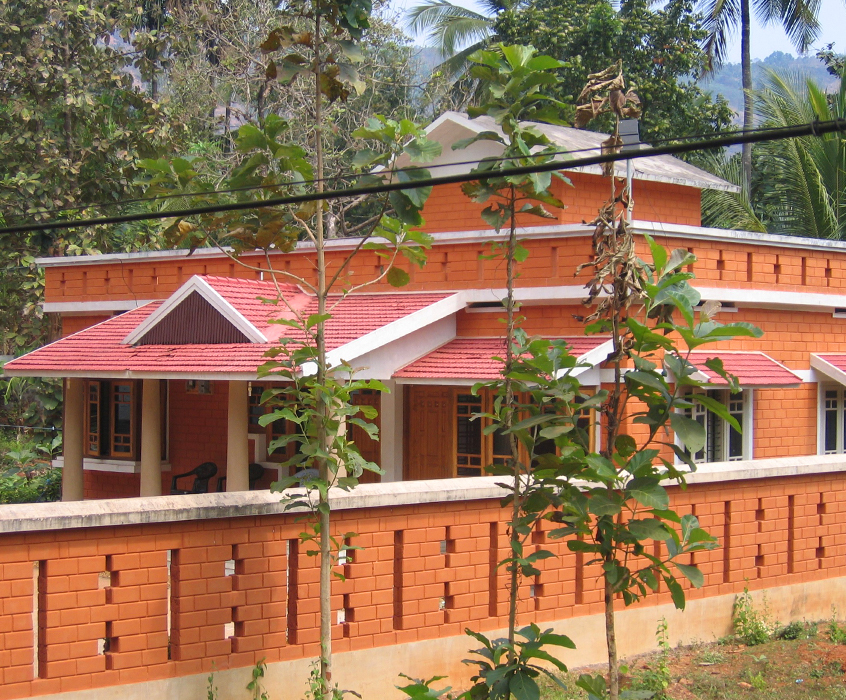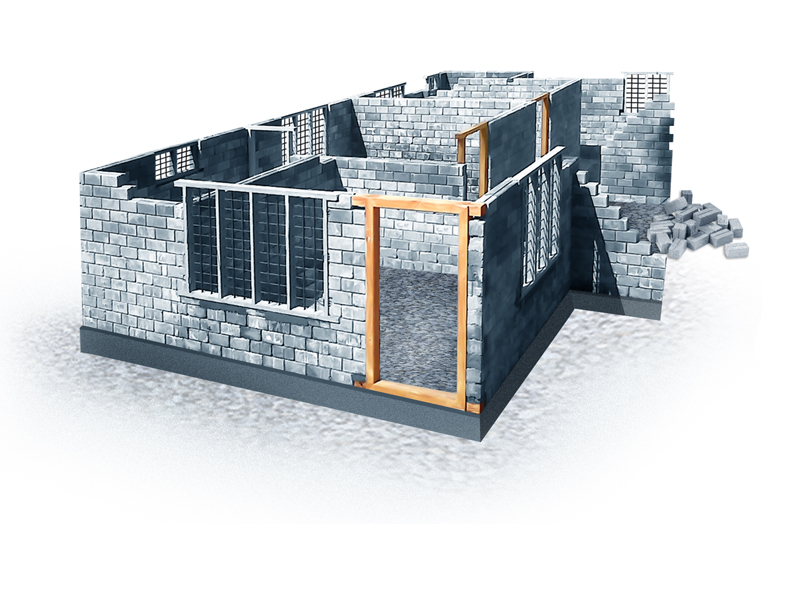
Construction using Interlocking Bricks
- toughie
- 21 Jun, 2021
Interlocking bricks have become the new trend in building construction as they are budget-friendly, give cooler interiors, are earthquake resistant and more such features. Normal bricks differ from interlocking in the following:
- In Interlocking bricks mud in high density pressed using a pressing machine and allowed to solidify by drying naturally. Normal bricks are baked ones
- The size of interlocking bricks is approximately 2.5 times more in volume than the baked bricks.
- Weight of Interlocking bricks is more than the equivalent volume of baked bricks.

Construction using interlocking bricks
When using interlocking bricks in construction, the process is slightly different from using normal bricks.
- Normal heavy basement is to be laid down first. The interlocking bricks have more weight than conventional bricks, hence a stronger basement is needed.
- After laying the basement, one layer of normal baked bricks is placed over it. Width of this brick layer shall match with the thickness of the wall which is going to be built using interlocking bricks.
- Experienced labourers can then neatly place the Interlocking bricks over this layer. This must be done carefully since any irregularities in their placement cannot be corrected at a later stage.
- Ensure that the edges of the roof project out a little more than the wall while concreting the roof. This will make sure that rainwater does not flow through the walls.
- After completing the wall construction, the corners of the wall are to be completely plastered using cement. This helps to have adequate pressure from the sides of the building for the bricks to bond together. If the pressure from the top is from the concrete above, plastering just ensures that the interlocking is placed with adequate pressure from all the four boundaries.
- No painting is needed for the external wall but the gaps have to be filled with like-coloured cement.
- The surface should be made rough before plastering the internal wall since the surface of this brick is relatively smooth. Plastering the internal wall should be done before painting.
To know more on construction with interlocking bricks in Kerala get in touch with us at Toughie Engineering. Call us at +91 9946466000 or drop us a line at info@toughie.in


